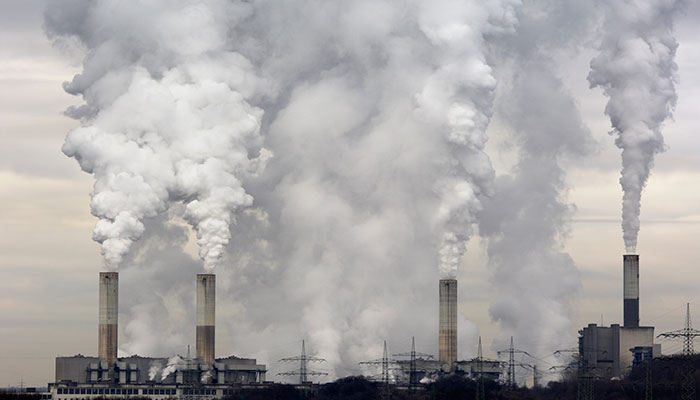The European Bank for Reconstruction and Development has signed up to a major international initiative: disclosing climate-related financial information related to its investment operations in line with the recommendations of the Task Force on Climate-Related Financial Disclosures (TCFD).
The commitment is reflected in our flagship 2018 Sustainability Report and has already been widely welcomed by organisations and thought leaders throughout the field of climate action.
But while we just happen to be the first multilateral bank to take this step, the entire multilateral development bank community is looking closely at these issues and at aligning operations with the Paris Agreement.
Here’s why the TCFD matters so much: this type of information, while not widely available across financial markets, is crucial for ensuring financial stability in the face of the uncertainties and potential shocks threatened by climate change.
When you buy a train ticket online in the UK, a page pops up on your browser telling you how many kilos of carbon dioxide you’ve saved by catching a train instead of driving. But when you buy shares in a company or open a savings account, you get no information about how your money may be affected by the physical impact of climate change. Why not?
The problem is not that we cannot work out how climate change affects businesses and investments – at the EBRD, we have carried out this kind of assessment on hundreds of investments.
The problem is that we can’t share this kind of information across the market in any standardised, systematised form. Even if a climate-conscious company or investor chooses to disclose how climate change impacts have affected their operations, there is no common standard that would allow for a meaningful comparison with competitors.
That matters.
Growing market awareness of the risks associated with high green house gas emissions, for example, has meant that investment is now pouring into clean energy technologies.
The train ticket example demonstrates how standardised metrics and data have empowered markets to tackle greenhouse gas emissions.
The consequences have been immense.
These measurements are now widely used and understood.
And if a company reduces its emissions, these can be measured and objectively reported. They can boast about it. Consumers, on the other hand, can make informed choices about how the products and services they purchase affect their planet.
So why can’t we do this when it comes to reporting how businesses are responding to climate change?
Reliable and consistent market information makes markets behave differently.
Growing market awareness of the risks associated with high GHG emissions, for example, has meant that investment is now pouring into clean energy technologies.
It has meant that investors are asking tough questions such as whether they really want to invest in coal over a 10-year time horizon. The standardised tools that provide this information are the result of almost two decades of work – an extraordinary achievement by thousands of people.
But when it comes to physical climate risk, there is a long way to go. We are able to assess risks, but the process is still too expensive, complicated, and time-consuming. Crucially, there is no agreed standard about how such assessments should be done or expressed in a way that can inform the decisions made by consumers, businesses, investors and regulators.
Our task is to turn that around.
At the EBRD, we have tools enabling us to take a more standardised approach, so that physical climate risks can be identified, managed and reported in a standardised way across different countries and sectors. But we are one institution. The task of designing robust, standardised, systems, tools and metrics that are understood across the wider market is much greater.
Which is why this initiative is so important.
At the EBRD we are pleased to be able to support this work, because we invest in many countries badly exposed to climate risks in Northern Africa, the Middle East and Central Asia.
At a broader level, however, the possibilities opened up by standardised metrics are immense.
Imagine a world, in five or 10 years’ time in which investors can see where the physical climate risks are in their portfolios or which asset classes entail greater risks or resilience opportunities.
These might end up being priced differently, insured differently, or disinvested. But most importantly, such decisions would be made by thousands of individual market actors all of whom have access to the same information.
The task is nothing less than designing the systems and standards that can enable financial markets to embrace the reality of a changing climate, thereby delivering the transformational change required to build resilience into the global economy.














